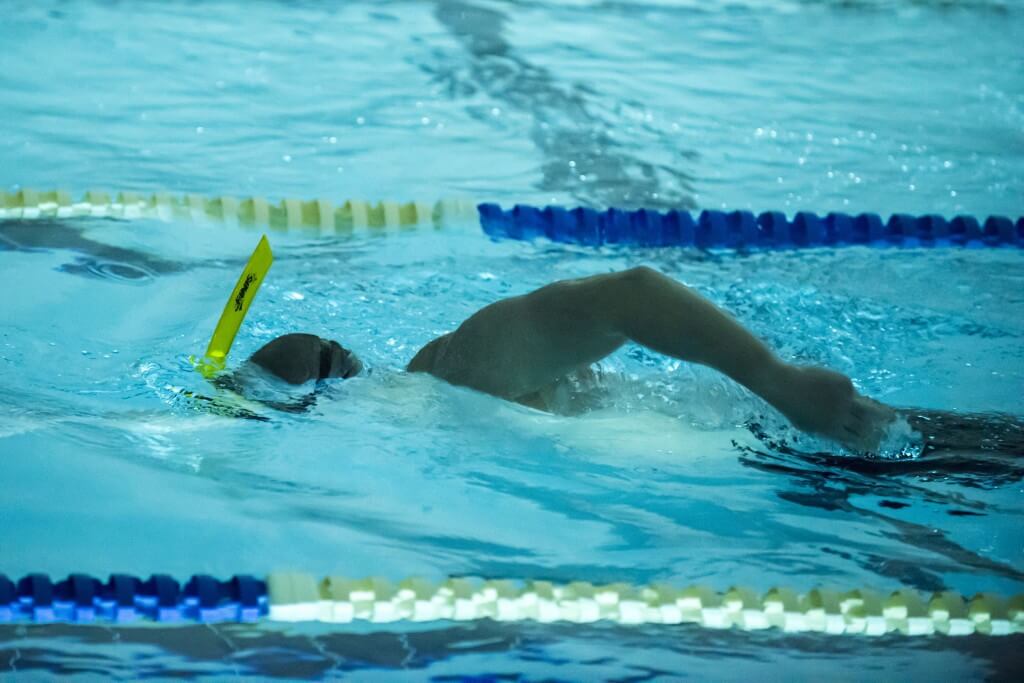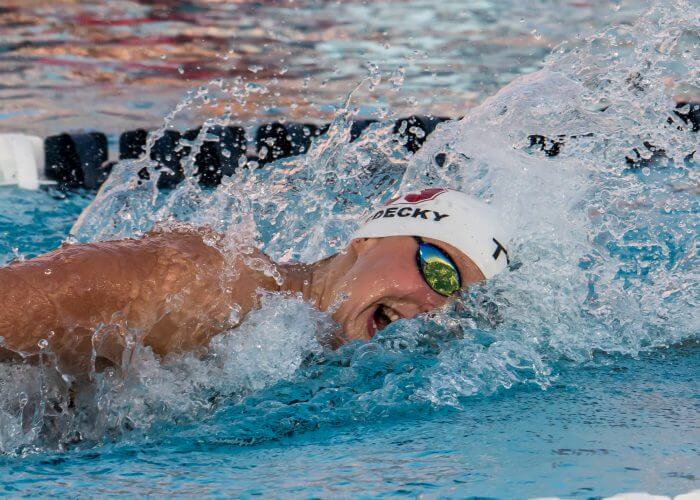How to Train On Your Own: 6 Helpful Hints

How to Train on Your Own – 6 Helpful Hints
By Kiah Francis, Swimming World Intern
It can be a challenge to train independently, but there are many ways to develop a game plan and make the most of the months left in 2020.
As 2020 continues, many swimmers may find themselves without a coach or program due to the COVID-19 pandemic. With states opening up from being under lockdown, some club programs find themselves having to merge with other teams, make changes to the coaching staff, or be unable to remain in business.
Even if this is not your case, you may find yourself in a position during your swimming career where you have to train apart from an organized swim team environment. If you or a swimmer you know find yourself in this situation, training independently may become a reality until you can find a new team to call home. Here are a few ways to get started with becoming an independent and more confident swimmer.
1. Find a body of water
Scope out your area to see if any high schools have open swim hours. Consider investing in a local membership if the situation seems long-term. Recreation facilities often have lap swim. This may mean having to share lanes with other swimmers of all levels. Be respectful and remember to swim on the right side of the lane.
It was Mark Spitz who said, “If you have a lane, you have a chance.” Although, consider open water swimming if you live near a lake or ocean. Better yet, if you live right on a lake, set up a makeshift lane rope between two docks. It’s all about being creative these days.
Not only is open water swimming ideal for long-distance swimmers, it also provides an opportunity to lengthen strokes and practice technique without being interrupted by the walls. Make sure there is an adult overseeing the workout for safety purposes.
2. Find a buddy
This could be a fellow swimmer, teammate, sibling, non-swimmer friend, or parent. If your buddy is in the water with you, race them. If your buddy is on deck, hand them a stopwatch or have them video your technique — provided the facility allows phones. Support will help you feel more motivated and accountable to your goals.
3. Listen to your body
Clubs are typically an ideal environment for improvement because of the rigorous training. However, swimming independently allows you to learn more about who you are as a swimmer.
What kind of training do you need? This does not always mean swimming heavy yardage or fast sets. It may be more beneficial to do freestyle drills than the aerobic Christmas challenge set from last year. Take care of that hurting shoulder by doing a kick set!
Do you swim better in the morning or the night? Is this the time you finally feel comfortable practicing breaststroke just to find out you are actually quite good at it? Every swimmer is different. Let yourself figure out what kind of a swimmer you are.
4. Have a game plan
For the swimmers who are ready to start with normal training, do not leave the house without a workout in your hand. Developing an entire swim practice can seem daunting, but with a little practice it will become second nature. It is easiest to either print or write the workout on a piece of paper and place it on a kick board for easy viewing during practice. If intervals seem too difficult to calculate, simply rest 10 to 30 seconds in between each rep.
Do not start by counting yardage. Be intentional with each set and be realistic. If a workout that you wrote is too difficult, you will be more likely to quit because it seems unreasonable. If you start small and work your way up, you will find yourself developing amazing workouts that even your coach would be proud of.
5. Watch “The Greats”

Photo Courtesy: Peter H. Bick
If you are a visual learner or just need motivation to get out of bed, watch the professionals. Start with viewing races from the 2016 Rio Olympics, or another major competition. Find a successful swimmer who swims similar events to yours and watch their race videos. This will help engage mirror neurons while swimming and help compare techniques.
There are countless videos on YouTube that show technique sessions with professional swimmers. Often, their coach highlights the key points of the drill being demonstrated. Take advantage of these resources to learn more about the sport.
6. Enjoy the process
Training on your own is an experience that many swimmers do not get to have, so enjoy the ability to be your own coach and decide how early you want to get up for practice. These are not normal times. Do not expect the practices and routines to be normal, either.
It is important to relax and understand that many other athletes are in the same boat. This can be a challenging circumstance, but with a little structure you can turn this challenge into a great opportunity.
All commentaries are the opinion of the author and do not necessarily reflect the views of Swimming World Magazine nor its staff.



